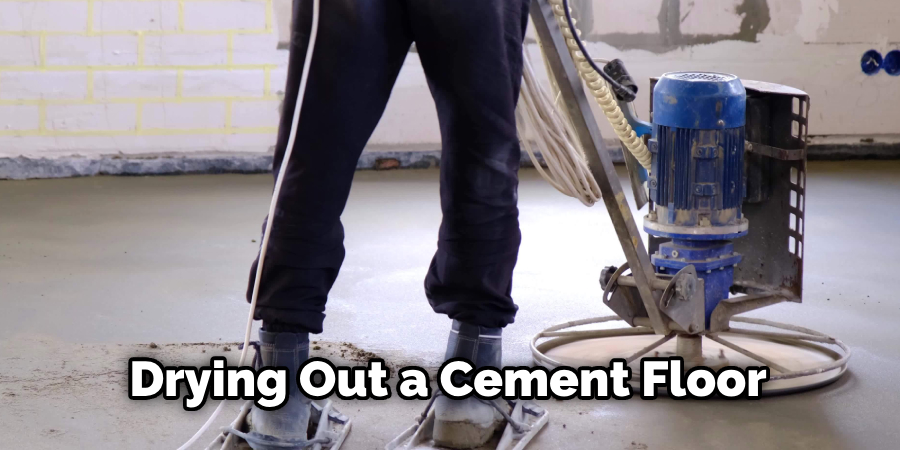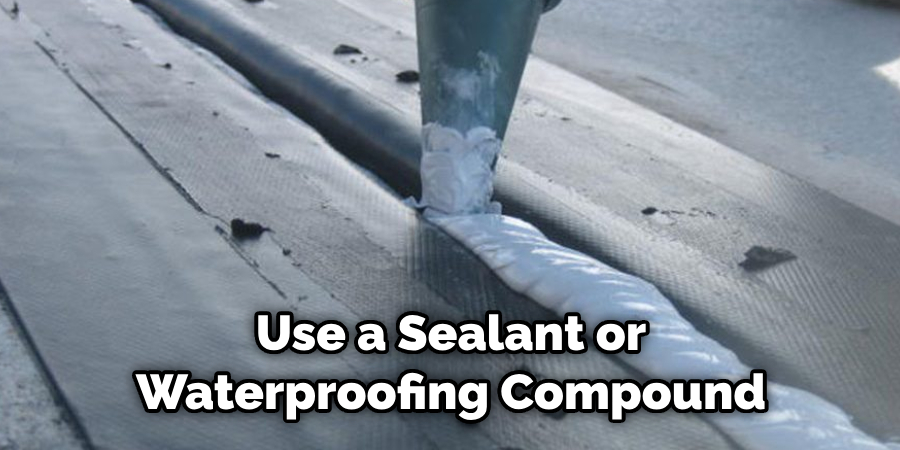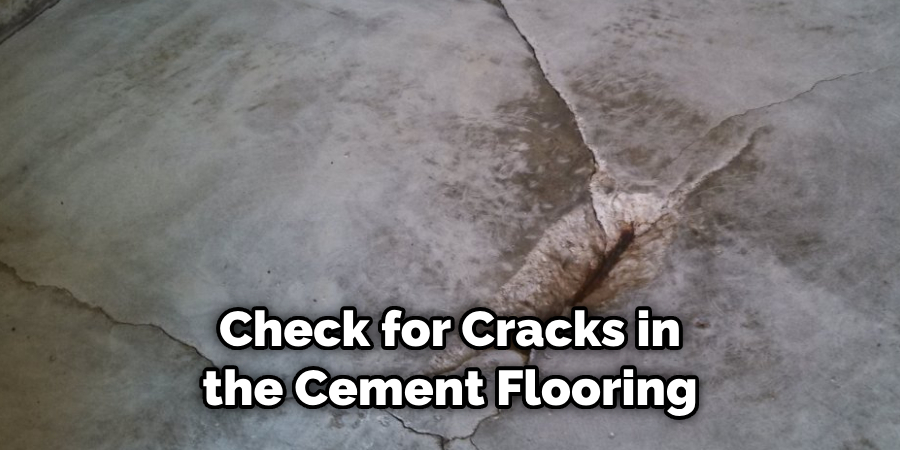Dealing with a leak in your concrete floor can be a challenging task, especially if the water has caused long-term damage. Have you recently experienced a leak that has left your cement floor soaked? Whether from plumbing, inclement weather, or something else, it can be difficult to dry out a cement floor and prevent potential damage. Seeing that pool of water when you come home is both unsettling and disheartening – not to mention potentially hazardous if there’s standing water around electrical components.

What do you do when this happens? Well, no matter what made the mess happen in the first place, drying out your cement floor should be your top priority. In this blog post, we’ll walk through step-by-step instructions on how to dry out cement floor after leak for quickly and efficiently cleaning up after a ceiling or wall leak and restoring your broken concrete floor back to its original state. Luckily, there are some easy steps that can help you manage any water spill quickly and with minimal stress. So let’s get started!
Things to Remember While Drying Out Cement Floor After Leak
- Safety First – Before attempting to clean up and dry out the floor, make sure that the area is secure and safe for you to enter. Ensure that there are no exposed electric cables or outlets, and keep children and pets away from the area.
- Remove Standing Water – The first step in drying out a cement floor after the leak is to remove the standing water. Use a wet/dry vac for larger puddles, and mop up any remaining moisture on the surface.
- Open Windows and Doors – Make sure that you open all windows and doors in the affected area to improve air circulation, which will help accelerate the drying process. Opening windows and doors will also help reduce humidity levels.
- Use Fans or Dehumidifiers – Once the standing water has been removed, you can use fans to help dry out the area faster. If there is still a lot of moisture on the floor, then a dehumidifier may be your best bet for quick drying times. Dehumidifiers work by extracting moisture from the air, which can help reduce humidity levels.
Required Items
Before starting the process of drying out a cement floor, it is important to ensure that you have all the necessary items needed for the task. You will need the following:

- Several buckets
- A wet/dry vacuum
- Moisture barrier underlayment (if needed)
- Fans of dehumidifiers
- Sponges or mops
10 Ways How to Dry Out Cement Floor After Leak
1. Cleaning
Start by cleaning up any standing water with a wet/dry vacuum or mop, and use buckets to carry away the wastewater. Also, make sure to clean up any debris or dirt that may have been brought in by the water.
2. Absorbent Materials
Once you’ve removed the standing water, you can use absorbent materials such as sponges and mops to help draw out moisture from the floor. Focus on areas near walls and corners that are hard to reach with a vacuum or mop.
3. Air Circulation
Open windows and doors in the affected area to increase air circulation, which will help speed up the drying process. Make sure to keep the space ventilated as much as possible until the floor is completely dry.
4. Fans/Dehumidifiers
Using fans or use dehumidifiers can help to reduce moisture levels in the air, which will prevent mold and mildew from forming on the floor. Dehumidifiers work by drawing out moisture from the air, while fans help speed up drying times.

5. Moisture Barrier Underlayment
In some cases, it may be necessary to install a moisture barrier underlayment before the drying process can begin. This will help prevent water from seeping into the cracks and crevices of your cement floor, causing further damage.
6. Check for Damage
Once the area is dry, you should check for any signs of damage on your cement floor. Look for cracking, discoloration, or other signs of deterioration. If you spot any damage, it is important to take the necessary steps to repair the area as soon as possible.
7. Seal and Protect
Once you’ve assessed the situation and made sure that there is no further damage, you can begin sealing and protecting your cement floor. You can use a sealant or waterproofing compound to keep water from seeping into the cracks and crevices in your concrete floor.

8. Use Dehumidifier Regularly
To ensure that your cement floor remains dry, you should consider investing in a dehumidifier and using it on a regular basis. This will help to draw excess moisture out of the air and keep your floor dry and protected from any further damage.
9. Check for Leaks Regularly
Finally, it is important to check for leaks on a regular basis to ensure that your cement floor remains dry and intact. If you spot any signs of water leakage, make sure to address the issue right away.
10. Professional Help
If you find that the drying process is taking too long or if you have concerns about potential damage to your floor, it is important to seek professional help from a qualified contractor. They will be able to assess the situation and advise on the best course of action for your particular problem.
These are just a few tips on how to dry out cement floor after leak. By following these steps, you can help ensure that your floor remains clean and dry in the long run. Remember, if the problem persists or if there is any sign of damage, make sure to contact a professional for assistance.
8 Tips to Prevent Leak
Make sure any plumbing in the area is adequately installed, and there are no leaks or potential for water damage. Check pipes, drains, and valves regularly to ensure they are functioning properly.
If you notice any signs of a leak, fix it right away to prevent further damage to the cement flooring.
- Use proper waterproofing. Before installing a cement floor, apply a good quality waterproofing sealant to protect it from water seepage. This will help keep the floor dry in case of any leaks or spills.
- Invest in gutters and downspouts. Installing these around your home can help channel rainwater away from the foundation, preventing it from seeping into the cement flooring. Also, make sure your gutters and downspouts are free of debris to reduce the possibility of water damage.
- Check for cracks in the cement flooring. If you notice any, seal them with a waterproof caulking product and fill in any low spots or depressions with mortar mix to keep rainwater from pooling on the surface.
- Elevate your furniture and other items off of the cement flooring. This will help them stay dry in case of any water damage and can also increase airflow between the flooring, which can help with drying out time.
- Use a wet vacuum to remove as much water as possible from the surface and then use fans to increase air circulation in the area. This will help speed up the drying process and reduce the chance of mold growth.
- If you can, remove any water-damaged items from the cement flooring to help it dry out faster. Water-damaged materials can often cause mold and mildew to form, so it’s best to get them out of the way.
- Use Dehumidifiers and air circulation fans if needed, as these will help remove moisture from the air and speed up the drying process in an enclosed area. Air circulation fans are especially helpful if the cement flooring is in an area that doesn’t get much airflow.
- Once the cement floor has dried out, apply a waterproof sealant to protect it from future water damage. This will help make sure any potential leaks won’t be able to seep into and damage your floors again.

By following these steps, you can help ensure that your cement floor will stay dry and in good condition even after a leak. It’s important to act quickly to prevent any further damage or mold growth from occurring.
Regularly checking pipes and drains for leaks as well as applying waterproof sealants, can also go a long way in keeping your cement floor dry and safe from water damage.
Conclusion
Overall, drying out a cement floor after a leak can be daunting. Taking the right steps on how to dry out cement floor after leak to handle it as soon as possible is key for preventing long-term damage and costly repairs.
Remember to first identify the source of the leak, dry out the excess moisture by using a mop or towel and some fans to circulate air, use an absorbent material like cat litter to absorb remaining liquid, seal any cracks in the concrete with caulking or epoxy repair compound, paint on waterproofing material when finished drying, and lastly check if there are any underlying issues that need attention.
With these strategies you should be well on your way to having your cement floor looking good as new! Don’t forget to examine similar areas in your home and address them accordingly if necessary.
Additionally, make sure to contact experienced professionals who can assess the severity of your situation and estimate further repair costs if needed. Before you know it, you’ll be safely back inside, walking on dry ground again.
